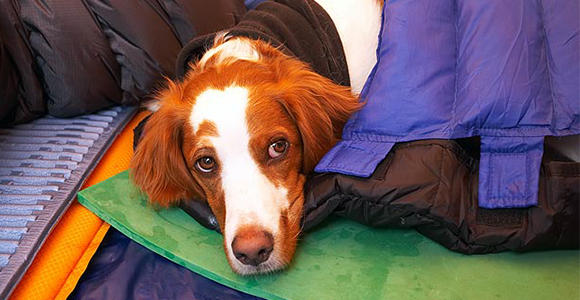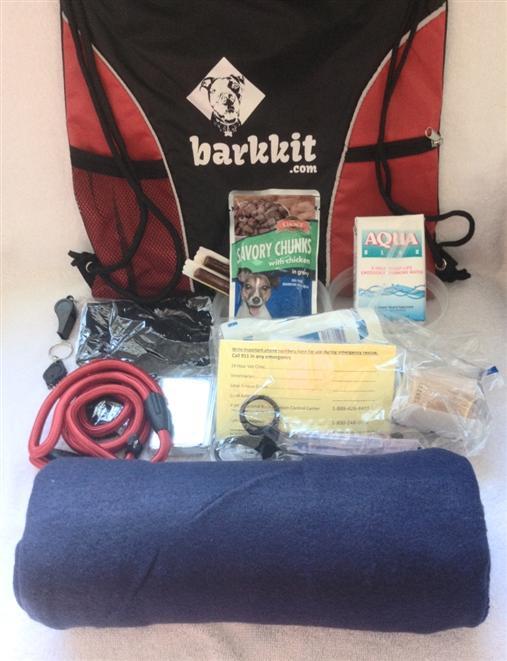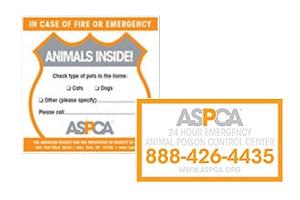
Section Branding
Header Content
How to Help Pets During Emergencies and Disasters
Primary Content

September is National Preparedness month. Most people know how to handle a human emergency but they don’t know how to help animals in trouble. They are ill equipped to assist hurt stray animals when they encounter them. They are clueless on how to save their pets when a natural disaster strikes. Luckily there are resources and kits to help with that.
Barkkit to Save Stray Animals

One of them is the Barkkit. Created by local friends Kevin and Jorge, the Barkkit is a backpack that contains everything needed to rescue a stray animal. It can be purchased at barkkit.com. Partial proceeds from sales go to rescue organizations. The two friends came up with the barkkit because they were heartbroken over stories and pictures of lost or stray animals who didn’t receive any help. They decided to do something and the kit was born.
The Barkkit contains:
- Heavy duty sling backpack with mesh and zipper pockets and reflective piping
- Sturdy nylon cable leash and collar combination
- Muzzle Individually wrapped food lures
- Emergency (not bottled) water
- Two bowls, for food and water
- Large, 50" by 60" fleece blanket
- Mylar reflective foil blanket
- Whistle LED flashlight
- 26 item first aid kit that contains things such as scissors, forceps, gauze roll and pads, cohesive bandage, gloves, and bags
- R4R Ready 4 Rescue oval sticker
ASPCA Rescue Alert Sticker

The ASPCA offers another resource: a rescue alert sticker. When hurricanes or floods strike, most people rush to safety first then return to their homes for their pets. But what happens if a person can’t get back to their homes where their dogs or cats are confined? How do they convey to rescue workers that their animals are still there? The ASPCA’s rescue alert sticker is a simple tool that relays the message. The sticker has a place for listing what animals are still in the home and emergency contact information. The ASPCA recommends placing the sticker on a door or another visible location. The organization also advises adding a vet’s name to the sticker. Order the sticker here: https://www.aspca.org/form/free-pet-safety-pack
Ingredients for a “Just in Case” Disaster Kit
The Humane Society recommends keeping a “just in case” disaster kit all year round. Here is an excerpt of what the disaster kit should contain. Go to: humanesociety.org/disaster for more advice.
- Food and water for at least five days for each pet, bowls, and a manual can opener if you are packing canned pet food. People need at least one gallon of water per person per day. While your pet may not need that much, keep an extra gallon on hand if your pet has been exposed to chemicals or flood waters and needs to be rinsed.
- Medications and medical records stored in a waterproof container and a first aid kit. A pet first aid book is also a good idea.
- Cat litter box, litter, litter scoop, and garbage bags to collect all pets' waste.
- Sturdy leashes, harnesses, and carriers to transport pets safely and to ensure that your pets can't escape. Carriers should be large enough to allow your pet to stand comfortably, turn around, and lie down. (Your pet may have to stay in the carrier for hours at a time.) Be sure to have a secure cage with no loose objects inside it to accommodate smaller pets—who may also need blankets or towels for bedding and warmth as well as special items, depending on their species.
- Current photos of you with your pets and descriptions of your pets to help others identify them in case you and your pets become separated—and to prove that they are yours once you're reunited.
- Written information about your pets' feeding schedules, medical conditions, and behavior issues along with the name and number of your veterinarian in case you have to board your pets or place them in foster care.
- Other useful items include: Newspapers Paper towels Plastic trash bags Grooming items Household bleach





